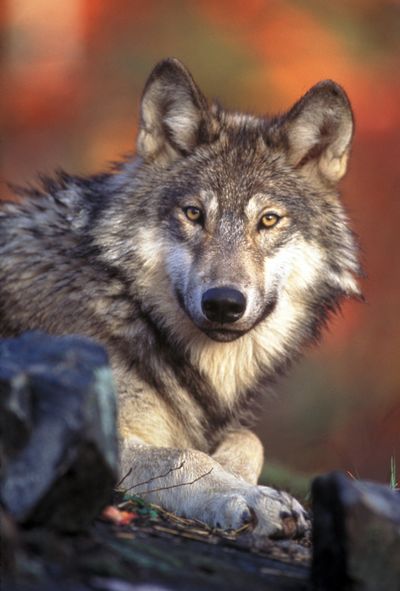Idaho adapts to wolf ruling, plans appeal
But officials will work with feds on control

BOISE – Idaho’s top wildlife officials have agreed to appeal a federal judge’s decision placing wolves back on the endangered species list, but they’ve also agreed to work with the federal government to keep the state in the lead role for managing its wolf population, even while the wolves are listed.
“If you aren’t in the game, you don’t have a place at the table,” said Idaho Fish and Game Commissioner Gary Power, of Salmon.
It’s unclear yet whether Idaho will be joined in its appeal by the lead defendant in the federal lawsuit – the U.S. Department of Interior – but the state can appeal on its own. The Interior and Justice departments have 60 days from the Aug. 5 decision to decide whether to appeal; U.S. Fish and Wildlife Service regional director Robin Thorson said no decision has been made.
Idaho Fish and Game commissioners also backed Gov. Butch Otter’s plan to work with the state’s congressional delegation to try to get legislation passed easing the wolf situation, and to pursue all management options available to the state under section 10(j) of the Endangered Species Act, including a proposed wolf-kill in the Clearwater drainage to reduce numbers there and ease impacts on the Lolo region’s elk herds.
“We may be waging a lot of battles on a lot of fronts, but at this point in time, we just need to pursue all available options,” said Commissioner Randy Budge, of Pocatello.
Commissioner Tony McDermott, of Sagle, said he’s hearing from “frustrated sportsmen,” and called the wolf ruling “a judge’s asinine decision.” But he joined the rest of the commission in unanimously supporting the multipronged approach to dealing with the decision.
When the wolves were off the endangered list, Idaho set a wolf hunting season and took in nearly half a million dollars from wolf tag sales. Now that hunting is off the table due to the court ruling, commissioners said they don’t want any sportsmen’s fees going toward wolf management; they want to spend only federal funds.
Wolves south of I-90 in Idaho are part of an “experimental, non-essential population” that was reintroduced in the region under Section 10(j) of the Endangered Species Act; that provides more flexibility for management than for naturally occurring populations, like those north of I-90 in Idaho. All were under full state management when they’d been removed from the endangered species list.
When the judge’s ruling came down Aug. 5, Idaho reverted to a 2006 agreement signed by then-Gov. Dirk Kempthorne and then-U.S. Interior Secretary Gail Norton for wolf management in Idaho. Commissioners have now agreed to negotiate a renewal of that agreement.
Thorson reassured them that the ruling wasn’t Idaho’s fault. Idaho, she said, “did everything right” to move toward delisting and recovery of wolves. “Your actions succeeded and wolves were delisted because they were recovered here,” she told the commission. “This was a federal rule that failed, and it failed Idaho. We regret that. We believed that this path was merited, and the court disagreed.”
U.S. District Judge Donald Molloy ruled that the federal government erred by de-listing wolves in Idaho and Montana while keeping them listed as endangered in Wyoming, which has no approved wolf-management plan.
Fish and Game officials from the three states returned Friday from an annual tri-state meeting, where wolves were a big topic of discussion. “We certainly talked about all those issues,” said Jim Unsworth, deputy director of Idaho Fish and Game. “There were certainly discussions back and forth among the three states, but there was no three-state resolution that came out of that.”
Meanwhile, Idaho has received 1,800 public comments on its plan to remove up to 80 percent of the wolves in the Lolo zone, limiting the wolf population in that zone to 20 to 30 each year for the next five years; there currently are close to 100. The public comment period on the plan runs through next week.
Thorson said that when the Fish and Wildlife Service receives the final proposal from Idaho, it’ll have a decision within 60 days.